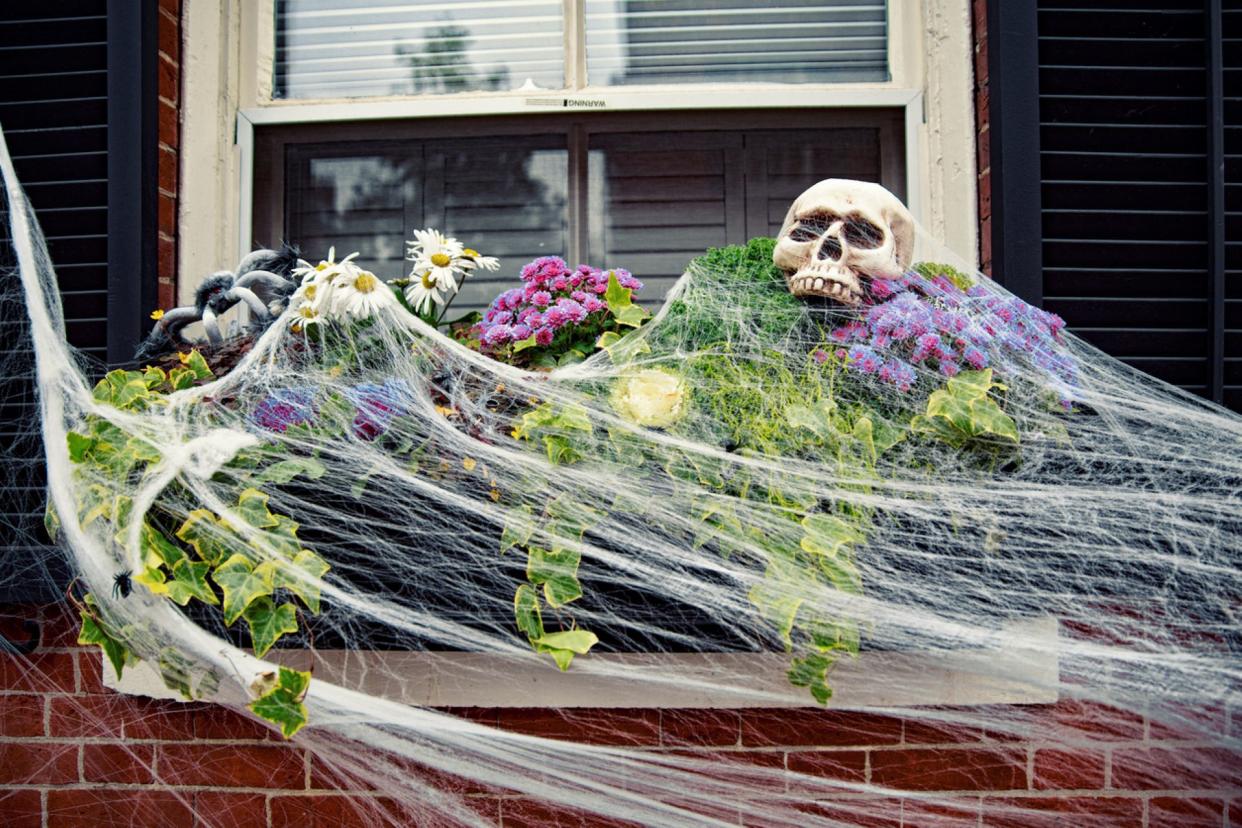Experts warn of Halloween decoration horrors for wildlife: ‘This is obviously not a new issue’

Halloween is creeping up on us, so it’s a good time to remind everyone how scary some decorations can be for local wildlife.
While getting in the spooky spirit can be a lot of fun, there’s one decorating trick that birds and rodents will definitely not find to be a treat.
Have you ever seen trees adorned with fake spider webs, often with a giant, furry toy spider for company? Well, these decorations might trap living creatures just like the real thing.
In 2018, the wildlife director of the Chattahoochee Nature Center in Georgia, Kathryn Dudeck, shared an image of a western screech owl caught up in the fake fibers.
Dudeck noted the photo came from 2011, so it is “obviously not a new issue,” and the message needs to be spread further to warn of the dangers the seemingly harmless trimmings can bring.
“This is the time of year that rehabilitators receive numerous animals caught in these decorations, from songbirds to chipmunks and everything in between,” Dudeck captioned her post.
Dudeck isn’t the only expert spreading the word. Chantal Theijn of Hobbitstee Wildlife Refuge in Ontario, Canada, told Treehugger that the decorations can be a particular problem for birds at Halloween because it comes in the middle of migration season.
The material in these fake spiderwebs can be incredibly fine, which makes it hard for the birds to see.
“I just had a golden-crowned kinglet come in yesterday that weighed in at a whole 5.9 grams,” Theijn told Treehugger. “So you can imagine how tiny these birds are; everything is an obstacle for them. At 5.9 grams, they don’t have the strength to get themselves loose.”
Trapping wildlife isn’t the only concern surrounding the season’s spooky celebrations. A 2019 study from environmental charity Hubbub, as summarized by the Guardian, revealed that in the United Kingdom alone, over 4.4 million pounds (2,000 tonnes) of plastic waste will be generated from costumes sold during the October tradition.
That’s equivalent to around 83 million plastic bottles. Plastic is harmful to the environment in every phase of its lifespan, from the toxic chemicals used in production to the potential to pollute water systems and enter the bodies of wildlife after disposal.
Chief executive of Hubbub Trewin Restorick told The Guardian: “These findings are horrifying. However, the total plastic waste footprint of Halloween will be even higher once you take into account other Halloween plastic such as party kits and decorations, much of which are also plastic, or food packaging.”
So when you’re getting in the spirit, perhaps consider more environmentally friendly options for decorations and costumes. For fake web in particular, Treehugger recommends stringing natural twine between porch posts or trees to create a web. You don’t want to give the birds in your area the fright of their life.
Join our free newsletter for easy tips to save more, waste less, and help yourself while helping the planet.

